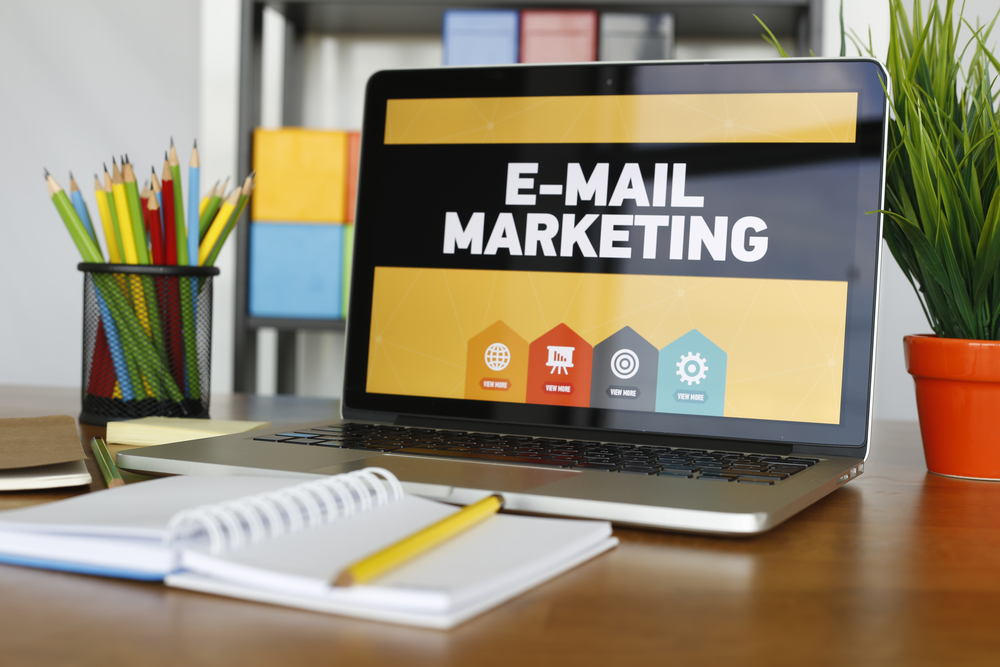In the dynamic and ever-evolving landscape of digital marketing, one strategy that continues to stand the test of time is email marketing. Far from being an outdated tool, email marketing remains a potent weapon in your arsenal when it comes to growing and nurturing your brand. With a well-crafted email marketing campaign, you can build strong relationships with your audience, drive conversions, and ultimately propel your brand to new heights.
What Is Email Marketing?
Email marketing is a pillar of digital marketing, it involves sending promotional content, messages or newsletters to a list of subscribers via email.
Your email marketing strategy should have a handful of goals but ultimately, it should focus on building customer relationships, promoting products or services, and increasing brand awareness to drive sales.
Email marketing allows you to reach your target audience directly with personalized and relevant content. Compared to other digital marketing strategies, it’s also very cost-effective, easy to track, and provides valuable data for analyzing campaign success.
Let’s delve into the key steps to effectively grow your brand using email marketing.
Email Marketing Benefits
There’s a wide range of benefits you get using email marketing.
- Very Cost Effective: Email marketing is very cost-effective compared to other digital marketing strategies.
- Direct Line To Leads: With email marketing, you have a direct line to contact potential customers anytime that you want.
- Get Personal With Potential Customers: Email marketing allows you to track how potential customers engage with your email content.
Let’s dive into the key steps to effectively grow your brand using email marketing.
1. Define Your Goals and Audience
Before you start writing copy for your emails, it’s crucial to have a clear understanding of your brand’s objectives and your target audience. What do you hope to achieve through your email campaigns? Whether it’s increasing website traffic, boosting sales, or establishing thought leadership, your goals will shape the content and strategy of your emails.
Equally important is defining your audience. Segment your email list based on demographics, behavior, and interests. This enables you to tailor your messages to resonate with different groups, increasing the likelihood of engagement and conversion.
2. Build a High-Quality Email List
The foundation of successful email marketing is a high-quality, engaged email list. Focus on organic list-building methods, such as website sign-up forms, social media promotions, and gated content offers. Purchasing email lists might seem tempting, but it often results in low engagement and potential legal issues due to anti-spam regulations.
3. Craft Compelling Content
Content is king, even in the realm of email marketing. Your emails should provide value to your subscribers, whether it’s informative articles, exclusive offers, or entertaining stories. Personalization is key – address recipients by name, and use dynamic content to show different content blocks based on user preferences.
Subject lines play a critical role in getting your emails opened. Craft concise, intriguing subject lines that pique curiosity and encourage recipients to click through. A/B testing different subject lines can help you discover what resonates best with your audience.
4. Design for Mobile and Accessibility
In an era where mobile devices dominate email opens, responsive design is non-negotiable. Your emails must render well on various screen sizes, ensuring a seamless experience for all recipients. Additionally, consider accessibility by using alt text for images and maintaining a clear, easy-to-read font and color scheme.
5. Automation and Segmentation
Modern email marketing platforms offer robust automation and segmentation capabilities. Utilize these features to send targeted, relevant messages at the right time. Welcome emails, abandoned cart reminders, and personalized product recommendations are just a few examples of automated campaigns that can nurture leads and drive conversions.
As for email marketing software, I recommend using Active Campaign or Convert Kit. Convert Kit is great for any of you that are just getting started. If you’re more advanced and are familiar with email marketing tools, Active Campaign is full of awesome features that will help you grow your email list.
6. Engage and Nurture
Email marketing isn’t just about sales pitches. Use your emails to engage, educate, and nurture your subscribers. Share valuable content, industry insights, and success stories. Consider a drip campaign that delivers a series of emails over time, gradually building a relationship and showcasing your brand’s expertise.
7. Call to Action (CTA)
Every email should have a clear and compelling call to action. Whether it’s encouraging readers to explore your latest collection, download an e-book, or take advantage of a limited-time offer, a strong CTA guides recipients toward the desired action.
8. Analytics and Iteration
Regularly analyze the performance of your email campaigns. Monitor metrics such as open rates, click-through rates, conversion rates, and unsubscribe rates. Use these insights to refine your approach. Experiment with different send times, content formats, and subject lines to optimize your results.
I can’t stress this enough, test, test, and test some more. If you’re tracking data and responding according to that data, you can always make sure you’re improving your email marketing. If an email is getting opened, try using a better title. Your email data and analytics will show you what works and what doesn’t – react based on the analytics you’re seeing and act accordingly.
9. Maintain Consistency and Frequency
Consistency is the key in a lot of different things, SEO, Content Marketing, Branding. Set a regular email schedule that your subscribers can anticipate. However, strike a balance – too many emails can lead to subscriber fatigue, while too few can make your brand fade from memory. Experiment to find the frequency that works best for your audience.
10. Compliance and Privacy
Last but not least, ensure your email marketing practices comply with relevant data protection and privacy regulations, such as GDPR or CAN-SPAM Act. Provide clear options for subscribers to opt-in and opt-out, and respect their preferences.
In conclusion, email marketing remains a potent tool for growing your brand’s reach and impact. By defining clear goals, crafting compelling content, utilizing automation, and continuously analyzing your efforts, you can build strong relationships with your audience, foster brand loyalty, and drive meaningful conversions. Remember, successful email marketing is an ongoing process that requires adaptation and refinement over time.

